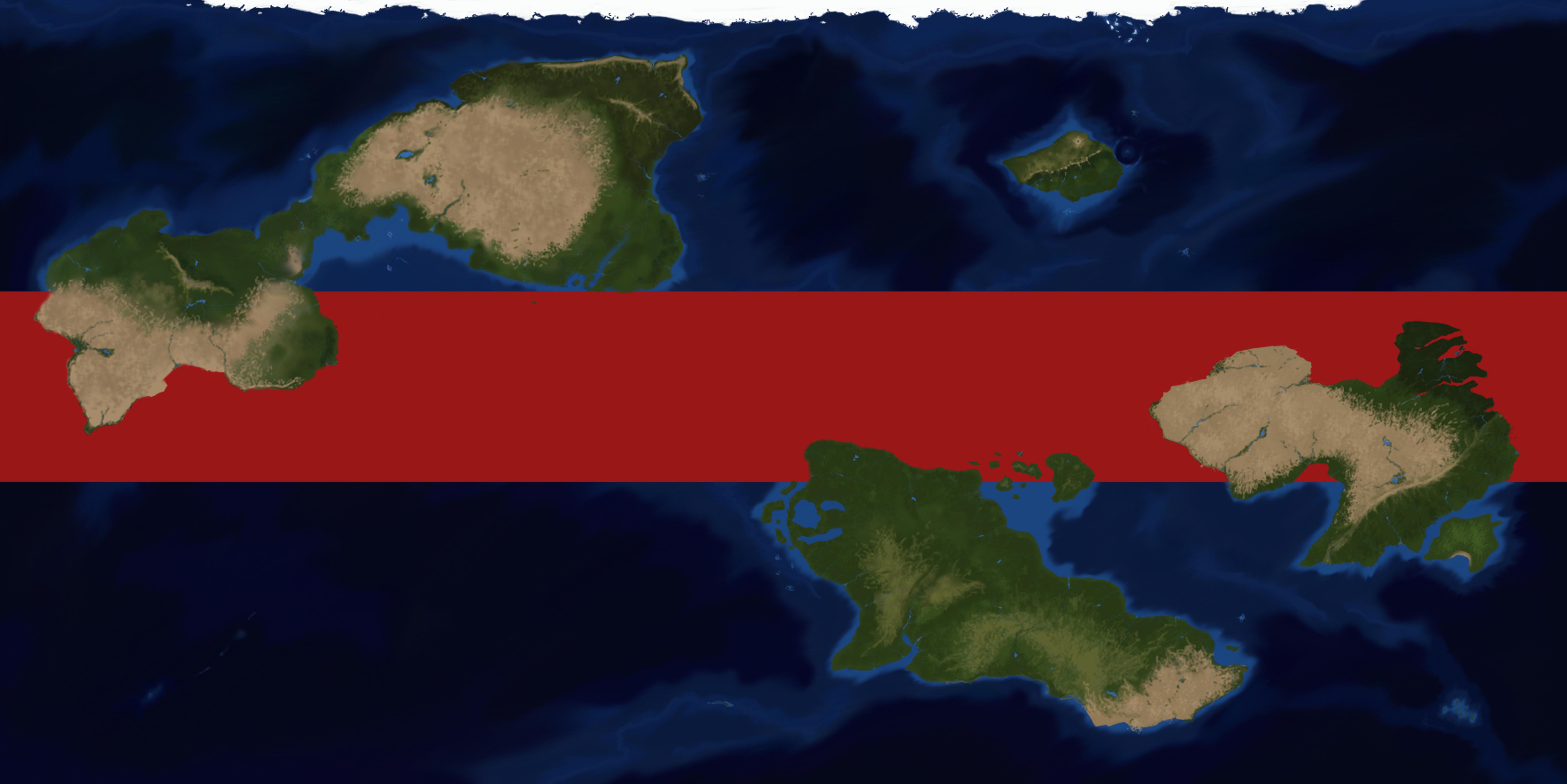Joannia equatorialis
Joannia equatorialis is a large sized predator that inhabits the equatorial’s pelagic environments.
This predator hunts alone and can take up a prey to the size of a Royal Flapper, being able to easily outmaneuver it and strike at weak spots such as the Gill fan and fins.
Sexual dimorphism in J. equatorialis is quite marked; females have brighter marking on the body while males have bigger frontal extrusions and longer fin tips.
Even if normally harmless to humans, it has been registered to sometime attack.
Usually found in various markets across the globe, this amphibian is considered the “Taurian Tuna” by most chefs.
It has a strong flavour and is often served raw accompanied by a savoury vegetable stew and tomatoes.
First described by Joanna Xerobia (Xerobia, 2433b), a famous marine biologist and a pioneer in the Taurian’s Ichthyology department during the second century of research.
Basic Information
Anatomy
- Thick Cranial and Dorsal armors, high frontal extrusion; very visible lacrimal plates.
- Three main, thicker teeth extruding from the dentary.
- Pectoral fins are smaller than in most other amphibians but are still very muscolar.
- Anal I fins are sharp; Anal II is single and near the basis of the Gill tail; Dorsal fin subrectangular at the base of the Gill tail.
- Gill fan with high ridges and steep caudal drop; long caudal fins with sharpened points.
Genetics and Reproduction
Joannia equatorialis reroduces in late autumn near the northern shores of Irobi, in the famous nesting site off the Elder's Cape.
This amphibian will migrate south to the area every year just for this occasion.
Males and females enter heat at different times; the females will enter heat first, giving them the drive to migrate south; the males will follow the females' scent and enter heat once at the nesting site.
The females will then search for an appropriate area to lay their eggs in; most commonly a big underwater boulder or an aquatic plant's hard trunk.
The males will court the females by enlarging their frontal extrusions and clapping their jaws; males will fight for the mating right to a female with violent fights that can result in some serious injuries.
Once the male has the mating right to itself, it will procede fertiizing the female; once a male has succesfully mated, it will leave the area and go back to its hunting grounds.
The female will incubate the eggs for one week inside the ducts and will lay them in the nesting position she found; shortly after the egg deposition, the females will leave the area and return to their native territories.
The eggs hatch five months later and the spawn will stay around Elder's Cape for the first year of their lives, following their mature conspecifics the following mating season to their tropical home up north.
Growth Rate & Stages
Ontogenesis not particularly marked.
Young specimens will have much brighter colors.
Loss of natal aculeus at nine months of age; a pretty common genetic mutation puts this event at ages of even one years old; possibly marking a future speciation of this amphibian.
Ecology and Habitats
Joannia equatorialis is an Epipelagic to Mesopelagic dweller of the Tropical belt, living at depths from 5 to 500 m.
These animals want warm, tropical, waters with plenty of free area to swim in; they dislike floating forests and will avoid them.
Dietary Needs and Habits
Joannia equatorialis is an active predator.
They will hunt mostly bigger amphibians usign their agility to outmaneuver them and hit at their weakspots like the Gill fan or fins.
They possess a strong bite able to break the bones of the Fan, creating massive damage and possibly suffocating the victim.
While they are mostly lonesome animals, once a hunt is finished they wont drive away other conspecifics if the prey is big enough to share.
Biological Cycle
Sexual maturity at three years old; jouvenile specimens will live for their fist year of life near the coasts of Elder's Cape.
Every year the frontal extrusion of the male grows bigger, making it more likely to find a companion.
The species never reaches sexual sterility in the wild; however they have been recorded becoming sterile in captivity; no clear reason why.
Additional Information
Social Structure
Not really gregarious animal.
Joannia equatorialis lives most of its life alone or in small bachelor groups of up to three specimens; they wont scare away conspecifics around prey given its big enough to share.
They will gather in great numbers off the coast of Elder's Cape during mating season but will leave shortly after.
No exceptional social interactions between specimens.
Domestication
Kept in many public aquariums for display purposes.
Uses, Products & Exploitation
Main use is human consumption; the animal has been overfished in certain territories, leading to some rules on the amount and sixe of the specimens that can be caught in the wild.
Once fished along the coasts of Elder's Capem now the area is part of the National Park and as such protected.
Most commonly found on the market from various farms.
Geographic Origin and Distribution
Perception and Sensory Capabilities
Exceptional eyesight and echolocation.
Symbiotic and Parasitic organisms
Afflicted by Intestinal Tube Worms .
In a commensalistic relationship with some smaller amphibians who will eat from this animal's prey.
Scientific Name
Eoichthyia; Tartarosomnia; Scutocephalidae ; Joannia; J. equatorialis
Lifespan
40 years
Conservation Status
LEAST CONCERN: No measures underway to its protection
Population trend: DECLINE
Average Weight
400 to 700 kg
Body Tint, Colouring and Marking
Blue body tint on the dorsal section; going down from the dorsal to thew ventral section of the body, the colour will get lighter from blue to a bright whitish-azure coloring.
Cranial armor grey with yellow lacrimal plates; Dorsal armor reddish in color.
Remove these ads. Join the Worldbuilders Guild












Comments